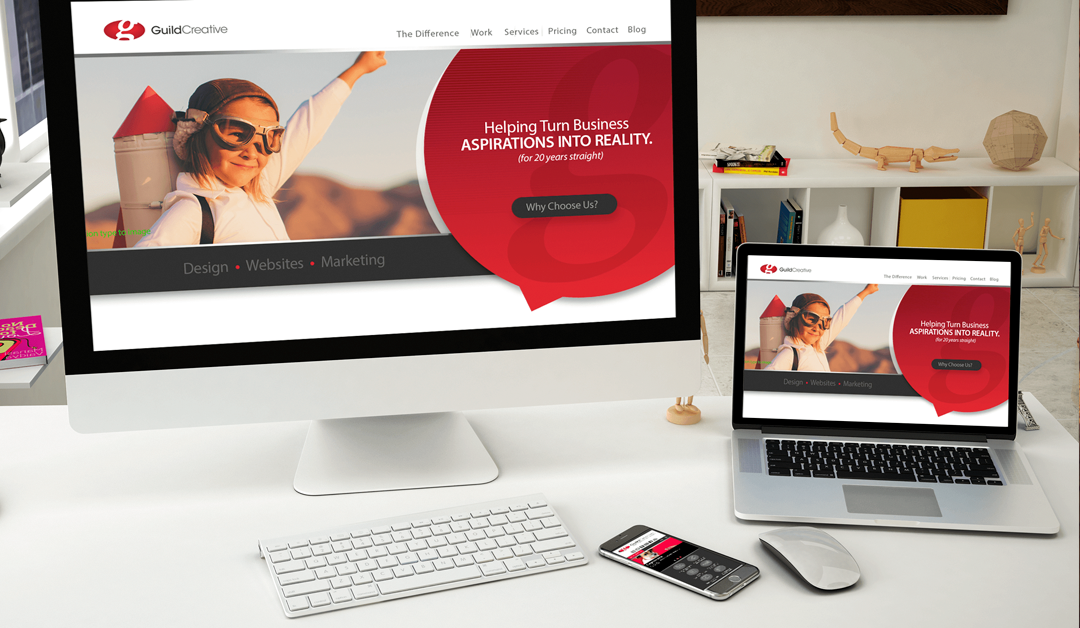March 19, 2025

By Ronald Hadley (ronald.hadley@biztipstoday.com). Image via Pexels
How to Start a Business Selling THCa: A Step-by-Step Guide
The cannabis industry is evolving rapidly, and THCa (tetrahydrocannabinolic acid) is gaining significant attention for its potential benefits. Unlike THC, THCa is non-psychoactive in its raw form, making it an attractive option for consumers seeking cannabis’s therapeutic properties without the high. If you’re considering starting a business selling THCa products, there are crucial steps you must take to ensure compliance, quality, and success in this competitive market.
Understanding the Legal Landscape
Before diving into the THCa business, you must thoroughly research and understand the legal regulations governing its sale. Laws surrounding cannabis and its derivatives vary widely between states and countries, and even minor missteps can result in hefty fines or legal trouble. Some jurisdictions allow the sale of THCa products as long as they remain within the legal THC limit, while others impose stricter restrictions. Consulting with a cannabis attorney or regulatory expert can help you navigate these complexities and ensure your business operates within legal boundaries.
Building Reliable Supplier Partnerships for THCa Success
Establishing strong relationships with trustworthy suppliers is vital for maintaining the quality and consistency of your THCa products. Begin by conducting thorough research to verify supplier credentials, assess product quality, and ensure compliance with legal standards. This diligence not only protects your business but also enhances your reputation in the competitive THCa market. By choosing suppliers who meet high standards, you can maintain a competitive edge and cater to diverse customer preferences. Understanding the unique properties of THCa diamonds and their properties can further guide your selection process, ensuring you offer products that align with consumer demands.
Keeping Up with Industry Developments
The cannabis industry is constantly evolving, with new research, laws, and consumer trends shaping the market. Staying informed about the latest scientific studies on THCa can help you educate your customers and refine your marketing strategies. Likewise, monitoring regulatory changes ensures you remain compliant and can adapt your business accordingly. Subscribing to industry newsletters, joining cannabis trade associations, and attending conferences can provide valuable insights and networking opportunities.
Crafting a Solid Business Plan
A detailed business plan is essential for securing investors, defining your goals, and setting a clear roadmap for your THCa business. Your plan should outline your target market, competitive landscape, financial projections, and marketing strategies. Consider how you will differentiate your brand—whether through product quality, educational content, or unique formulations. Additionally, factor in startup costs, licensing fees, operational expenses, and expected revenue to create a realistic financial forecast.
Choosing Your Distribution Channels
Deciding how you will distribute your THCa products is a critical step in shaping your business model. You can sell directly to consumers through an e-commerce website, open a physical storefront, or supply other retailers and dispensaries. Each approach has its own challenges and benefits—online sales require strong digital marketing strategies and compliance with shipping regulations, while brick-and-mortar stores demand a significant upfront investment. Consider your target audience and local laws when determining the most effective distribution method.
Implementing Strict Quality Control Measures
Maintaining high product quality is non-negotiable in the cannabis industry. Implementing rigorous quality control measures ensures that your THCa products meet both legal and consumer expectations. This includes testing for contaminants like pesticides, heavy metals, and mold, as well as verifying cannabinoid potency. Transparency is key—providing lab test results on your packaging or website builds consumer trust and sets your brand apart from less scrupulous competitors.
Educating Your Customers on THCa
Many consumers are unfamiliar with THCa and its potential benefits, making education a vital aspect of your business. Providing accurate, science-backed information through blog posts, social media, and in-store consultations can help customers make informed purchasing decisions. Explain how THCa differs from THC, its potential therapeutic uses, and the best ways to consume it. Educating your audience not only fosters customer loyalty but also positions your brand as a trusted authority in the cannabis space.
Starting a THCa business requires careful planning, legal awareness, and a commitment to quality. By staying informed, building strong industry relationships, and prioritizing customer education, you can establish a reputable and successful brand in this growing market. With the right strategy, your THCa business can thrive while providing consumers with high-quality products that meet their needs.
Discover how Guild Creative can elevate your brand with innovative marketing solutions tailored for small businesses!
March 11, 2025

By Ronald Hadley (ronald.hadley@biztipstoday.com). Photo by Freepik
Experiencing a surge in business growth can be both thrilling and daunting. As your enterprise expands, the need for strategic planning becomes paramount to ensure sustainability and success. This phase demands a keen understanding of market dynamics, effective resource management, and a commitment to continuous learning. By adopting innovative strategies and leveraging the right tools, businesses can transform challenges into opportunities for advancement.
Tackle Challenges by Building Skills
Boosting your business acumen is crucial when managing rapid growth, and earning an online business degree can be a game-changer. This educational path enhances your ability to lead in dynamic environments by honing critical thinking, communication, and leadership skills. Pursuing a bachelor of business management for personal development further refines your capabilities in operations and project management, essential for steering your business through periods of expansion. The flexibility of online programs allows you to integrate learning with your existing commitments, making it an ideal choice for busy entrepreneurs. Investing in your education not only prepares you for immediate challenges but also positions you for long-term success in a competitive market.
Streamline Growth with ERP Systems
To effectively manage the complexities of rapid expansion, consider implementing ERP systems to enhance your supply chain management. These systems provide a cohesive platform that integrates data across departments, ensuring real-time information sharing and reducing the need for manual data conversions. By automating routine tasks and improving supplier communication, ERP solutions help maintain optimal inventory levels, minimizing both excess stock and stockouts.
Integrate Sustainability
Fostering sustainable growth requires a focus on performance metrics that go beyond traditional financial returns. Unlike conventional ROI, sustainability ROI considers financial, environmental, and social values. By clearly defining your objectives and examining the entire value chain, you can gain insights into both tangible costs, like energy and waste, and intangible benefits, such as brand reputation and employee satisfaction. This comprehensive approach not only helps meet compliance requirements but also positions your business to thrive amid economic uncertainties and resource constraints.
Engage in Competitive Analysis
To maintain a strategic edge during rapid growth, leveraging competitive analysis is essential. By consistently updating your competitive analysis, you gain a clear understanding of the market landscape, identifying both direct and indirect competitors. This process not only highlights competitors’ strengths and weaknesses but also uncovers opportunities for your business to improve. With this knowledge, you can refine your marketing strategy to better engage your target audience and set clear business goals.
Empower Your Business with Effective Leadership
Investing in leadership training is crucial for small business owners navigating rapid growth. Many companies, especially those with fewer than 500 employees, often overlook the importance of comprehensive management training, providing minimal time for development. This oversight can lead to a significant gap in leadership capabilities. By prioritizing leadership development, you can ensure your managers embody your organizational values and are equipped to enhance productivity and employee satisfaction. This investment transforms managers into effective leaders who can adeptly handle the challenges of sudden growth, fostering a more resilient and successful business.
Invest in Employee Training
Investing in employee training is a strategic approach that can significantly boost your business’s growth and adaptability. By providing your team with new skills and knowledge, you empower them to perform their tasks more effectively, leading to improved productivity and customer satisfaction. This not only enhances your company’s reputation but also fosters a culture of excellence that propels continuous growth. Moreover, offering training opportunities can increase employee morale and loyalty, as they feel valued and recognized for their contributions.
Cultivate a Flexible Workforce
In the midst of rapid business expansion, fostering a culture of flexibility and adaptability among your employees is essential. Implementing mentoring and coaching programs can be a strategic move, pairing experienced employees with those eager to develop these crucial skills. This approach ensures that employees receive the necessary guidance to navigate new challenges effectively. Regular feedback sessions with mentors can help employees track their progress and make necessary adjustments, promoting a growth mindset that views challenges as opportunities for development.
Incorporating these strategies into your business model can transform the challenges of rapid growth into opportunities for sustained success. By focusing on education, technology, sustainability, and workforce development, you create a robust foundation for your business to thrive.
Discover how Guild Creative can elevate your brand with innovative marketing solutions tailored for small businesses. Visit their website to see how they can help you stand out and achieve sky-high results!
February 17, 2025

By Ronald Hadley (ronald.hadley@biztipstoday.com). Photo by Freepik
Growing a business isn’t a one-size-fits-all endeavor. Each stage of growth comes with unique challenges, requiring different strategies to ensure stability and expansion. What works for a startup won’t necessarily apply to a mature company looking to diversify. By understanding the nuances of business development, you can implement the right approach at the right time. Whether you’re launching a new venture or scaling an established brand, knowing which strategies to adopt can make the difference between stagnation and success.
Establishing a Scalable Business Model
At the startup stage, your primary focus should be on building a strong foundation. This means creating a business model that not only meets market demand but is also scalable. Too often, new businesses focus solely on short-term profitability, overlooking the importance of long-term sustainability. Instead, prioritize lean operations, adaptability, and data-driven decision-making to ensure that growth doesn’t outpace your infrastructure. A well-structured foundation will allow you to pivot when necessary while maintaining stability in the face of uncertainty.
Finding Your Market Fit
Before a business can grow, it must establish its place in the market. Market research and competitive analysis are key tools in understanding where your business fits and how you can differentiate yourself. Instead of casting a wide net, focus on refining your niche and delivering unmatched value to a specific customer base. Strong branding, clear messaging, and targeted marketing will help solidify your position and create a loyal customer base. Without a well-defined market fit, even the most promising businesses struggle to scale effectively.
Creating Powerful Marketing Videos
Video marketing is one of the most engaging ways to connect with your audience and showcase what makes your business unique. High-quality, compelling videos can tell your brand’s story, demonstrate your products, or share customer testimonials in a way that resonates emotionally with viewers. To streamline the process, you can use a free video editor to help create your videos, allowing you to add audio, change your video speed, animate elements, and more. When done right, video content can boost your visibility, drive traffic, and help you promote your brand by creating videos that leave a lasting impact.
Leveraging Customer Acquisitions
Once you’ve identified your ideal customer, the next step is scaling your customer base. A mix of organic and paid strategies, including social media marketing, search engine optimization, and strategic partnerships, can help drive customer acquisition. Instead of focusing solely on volume, prioritize quality leads that have high retention potential. A business that builds strong relationships early on will have an easier time sustaining growth than one that constantly chases new customers. Sustainable growth depends not just on attracting new customers but also on keeping them engaged.
Earning an MBA
Expanding your business skills through continued education can open new doors and enhance your ability to navigate an evolving market. Going back to school gives you the opportunity to sharpen your expertise, explore new strategies, and strengthen your decision-making abilities. An MBA program can deepen your understanding of business, strategy, and management while also helping you grow as a leader through self-awareness and self-assessment. If flexibility is a priority, an online degree allows you to advance your education without putting your career on hold, making it easier to learn at your own pace.
Streamlining Operations for Scalability
As a business expands, inefficiencies become more apparent and can hinder progress. Growth isn’t just about increasing revenue—it’s about improving operational efficiency to support increased demand. Implementing automation, optimizing supply chains, and refining internal processes can help maintain momentum without overwhelming resources. Without strategic efficiency improvements, businesses risk burning out their teams, increasing costs, and losing sight of their core objectives. A streamlined operation ensures that scaling doesn’t come at the cost of quality or service.
Exploring New Revenue Streams
Once a business reaches maturity, growth often comes from expansion into new markets or product lines. Diversification can help protect against market fluctuations and create additional revenue streams. However, not all growth opportunities are equal, and expanding too quickly without proper market research can be costly. Instead of chasing every opportunity, focus on complementary products or services that align with your brand and customer needs. Thoughtful diversification allows businesses to evolve without losing sight of their core strengths.
Investing in Leadership and Innovation
Long-term success requires more than just a great product—it demands strong leadership and a culture of innovation. As businesses grow, leadership must evolve to meet new challenges, and investing in talent development becomes crucial. Encouraging innovation keeps a company competitive and adaptable in changing markets. A business that fosters a forward-thinking culture and empowers its teams will always be better positioned for sustained success. Growth is not just about external expansion but also about strengthening the internal ecosystem that drives it.
Adapting to Market Changes
Even well-established companies must remain agile to survive in an ever-changing business landscape. Consumer behavior, technology, and economic factors constantly shift, requiring businesses to stay proactive. Regularly reassessing strategies, adopting emerging technologies, and staying attuned to industry trends can help businesses stay ahead of the curve. Stagnation is the enemy of growth, and the most successful companies are those that embrace change as a constant. A business that future-proofs itself today will continue to thrive in the years to come.
Business growth isn’t linear, nor is there a universal playbook that guarantees success. Each stage presents new challenges and opportunities, requiring businesses to adapt and refine their strategies. By implementing the right strategies at the right time, you can ensure your business remains resilient, competitive, and primed for continuous growth. The key isn’t just expanding—it’s doing so with purpose, vision, and adaptability.
Discover how GuildCreative can elevate your brand with innovative marketing solutions tailored for small businesses. Visit their website to explore how they can help you stand out and achieve results!
January 6, 2025

By Ronald Hadley (ronald.hadley@biztipstoday.com). Photo by Freepik
Today’s businesses are increasingly recognizing the importance of sustainability not just as a trend, but as a fundamental component of their operations. Crafting an eco-friendly business model is not only a moral imperative but also a strategic advantage that can drive growth and profitability. By integrating sustainable practices into every facet of your business, from operations to marketing, you can create a resilient model that appeals to environmentally conscious consumers. This article delves into practical strategies that can help businesses thrive while making a positive impact on the planet.
Strategic Benefits of Forming an LLC
When starting your eco-friendly business, forming a limited liability company (LLC) can be a wise decision. An LLC offers limited liability protection, safeguarding your personal assets while providing tax flexibility that supports sustainable growth. Additionally, LLCs typically require less paperwork and offer more operational flexibility than corporations. It’s essential to understand the specific regulations in your state. For example, if you’re considering forming an LLC in Colorado through ZenBusiness, familiarize yourself with Colorado’s requirements. This strategic move not only protects your personal assets but also positions your business for long-term success and a positive environmental impact.
Digital Tools for Eco-Friendly Marketing
Leveraging digital platforms is a powerful way to minimize reliance on traditional marketing materials. By engaging with a global audience through strategies like social media marketing and email campaigns, suggests Sprout Social, you reduce costs and contribute to environmental conservation. This approach aligns with the growing focus on sustainability and enhances customer interaction by reaching them online. As the digital landscape evolves, adapting to these changes can give your business a competitive edge while lowering its carbon footprint.
Sustainability Audits
Conducting regular sustainability audits is vital for aligning your business with environmental, social, and governance (ESG) standards. These audits help identify strengths and areas for improvement, ensuring alignment with industry benchmarks. By systematically assessing your company’s practices, you can track key performance indicators (KPIs) and drive continuous improvement. Utilizing tools like KPI dashboards can streamline the audit process, enhancing efficiency and effectiveness. Regular audits act as a proactive measure to mitigate potential risks and bolster your business’s eco-friendly model.
Eco-Friendly Design
Incorporating eco-friendly design principles can significantly enhance sustainability throughout your product’s lifecycle. By focusing on Ecodesign, you can evaluate each stage of the product’s life to minimize environmental harm. This involves selecting materials with a low environmental footprint and employing innovative manufacturing techniques to reduce emissions. Adopting circular design strategies, such as using recycled materials, helps keep resources in circulation. Aligning these practices with your corporate strategy not only contributes to environmental sustainability but also engages customers in meaningful ways.
Sustainable Packaging
Incorporating sustainable packaging into your business model minimizes environmental impact and enhances your brand’s appeal to eco-conscious consumers. Through implementing reusable and refillable packaging systems, you can significantly reduce single-use waste. Highlighting these sustainable choices in your marketing materials can differentiate your brand, build trust, and drive growth by showcasing your commitment to environmental responsibility. This approach aligns with stricter EU sustainability regulations and taps into the growing consumer demand for eco-friendly products.
Research Collaborations
Forming strategic partnerships with educational institutions can drive sustainable innovation and enhance your business model. Universities are hubs of cutting-edge research, providing opportunities to access the latest advancements in sustainable technologies. These collaborations enable you to harness academic expertise to develop eco-friendly solutions that align with your corporate objectives. By investing in academic research, you contribute to societal progress and gain a competitive edge by integrating sustainable practices into your business model.
Pursuing an eco-friendly business model is a strategic choice that aligns with both ethical values and market demands. By adopting these strategies, businesses can not only contribute to environmental preservation but also achieve sustainable growth and profitability. As the world increasingly values sustainability, those who lead with eco-friendly practices will set themselves apart and inspire others to follow suit.
Discover how Guild Creative can elevate your brand with innovative marketing solutions tailored for small businesses. Visit their website to see how they can help you stand out and succeed!
April 16, 2024

By Ronald Hadley (ronald.hadley@biztipstoday.com). Photo by Freepik
In today’s dynamic business landscape, small businesses face unprecedented challenges. Uncertainty prevails, and adaptability is critical to survival. One powerful tool in a small business owner’s arsenal is their website. Today, Guild Creative explores some essential website modifications that can help small businesses like yours thrive in uncertain times:
Efficiency in Action
Slow-loading websites can deter potential customers. In a world where every second counts, a website that takes too long to load can drive potential customers away. To combat this, implement techniques such as image optimization and content delivery networks (CDNs) to boost loading times. Image optimization reduces the file size of images on your website without compromising quality, while CDNs distribute your website’s content across multiple servers globally, ensuring faster loading times for users across different regions.
Knowledge is Power: Invest in Your IT Education
A robust IT grasp proves invaluable in an ever-evolving digital landscape. Exploring the possibility of returning to educational institutions to augment your web and IT acumen is a judicious choice. Embarking on an online degree journey – perhaps by looking into potentially lucrative cybersecurity programs – offers the opportunity to acquire proficiencies in systems and services, networking, scripting, data management, and the business of IT. This educational investment amplifies your capacity to oversee and fine-tune your website and bolsters your overall digital footprint so you can navigate uncertain times adeptly.
Stay Fresh and Relevant: Regularly Update Website Content
Fresh and relevant content is the lifeblood of your website. It keeps visitors engaged and informed. Regularly updating your website with new content, whether it’s blog posts, product descriptions, or news updates, can significantly impact your online presence. Consistent updates also improve your website’s search engine ranking so it’s more discoverable to potential customers. In uncertain times, staying relevant and visible is crucial for small businesses.
Embrace Digital Evolution
Offering online ordering and delivery can expand your customer base and revenue streams. The convenience of online ordering has become increasingly popular, and businesses that embrace this trend are better positioned to thrive. Ensure a user-friendly interface for a seamless customer experience. Your website should make the ordering process easy and intuitive, providing customers with a hassle-free way to purchase your products or services online.
Fortify Your Digital Fortress: Increase Website Security
Cybersecurity is a paramount concern for any business operating in the digital sphere. Protect your business and customer data from cyber threats by investing in robust security measures. SSL certificates, which encrypt data transmitted between your website and users, are essential for building trust. Regular security audits can help identify vulnerabilities and ensure your website remains secure. The last thing you need is a data breach compromising your business’s reputation and integrity.
Reach Every Screen
As more users access websites via smartphones, mobile optimization is no longer optional – it’s essential. A responsive design ensures a consistent and user-friendly experience across all devices, from desktop computers to mobile phones and tablets. Neglecting mobile optimization can lead to a high bounce rate, as users frustrated with a non-responsive website seek alternatives. Make sure your website adapts seamlessly to different screen sizes and orientations.
Harness Social Media Synergy
Social media platforms offer a valuable opportunity to connect with your audience and drive traffic to your website. To maximize your online presence, leverage social media to promote your products or services. Create a cohesive online presence by interlinking your social profiles with your website. Include links to your website in your social media bios and posts, encouraging users to explore your offerings and engage with your content. This synergy between social media and your website can significantly boost your online visibility and customer engagement.
Website Updates to Help You Navigate Tough Times
Small businesses can thrive in uncertain times by making strategic website adjustments. All the upgrades above can contribute to a robust online presence. By implementing these measures, your small business can not only weather uncertain times but also position itself for long-term success in an ever-evolving market. Stay agile, stay informed, and embrace the power of digital evolution to master online success!
Guild Creative is the marketing agency you’ve been looking for. We look forward to hearing from you!
October 27, 2023

By Ronald Hadley (ronald.hadley@biztipstoday.com). Photo by Freepik
The entrepreneurial spirit isn’t defined by the depth of one’s pockets but by the strength of one’s vision and determination. While vast reserves of capital can certainly expedite business growth, a lack of funds doesn’t signify the end of an entrepreneurial dream. History is replete with examples of businesses that rose from minimal capital outlays, relying instead on innovation, strategic partnerships, and sheer grit. If you’re contemplating taking the entrepreneurial leap with little to no startup capital, this article, courtesy of Guild Creative, offers a roadmap to navigate the challenging, yet rewarding, journey ahead.
Map Out Your Business Plan
A robust business plan acts as both a magnet for potential investors and a navigational guide for internal processes. This document should be comprehensive, encompassing the mission, vision, and a meticulous breakdown of short and long-term objectives. It should outline the strategies for achieving these goals and should be treated as a dynamic tool, subject to periodic review and updates.
Form Partnerships
Joining forces with individuals who align with your business objectives can be a mutually beneficial move. Through this alliance, both parties stand to benefit from a shared pool of competencies, networking reach, and material resources. The financial burden of starting up is substantially eased when capital and risks are distributed. Additionally, the cross-pollination of ideas can result in innovative solutions that catalyze growth more rapidly than solo ventures.
Outsource to Save Money
Rather than hiring full-time employees for specific roles, which comes with substantial overhead costs like benefits, training, and office space, startups can tap into a vast pool of specialized talent available on freelance platforms or by working with agencies that offer marketing, design, or even accounting support. This allows businesses to pay only for the exact services they need, and often at a fraction of the cost.
Uphold Strong Credit History
Maintaining a robust credit profile is a vital part of ensuring long-term financial stability. A positive credit standing not only improves the chances of securing loans at attractive interest rates but also establishes credibility when soliciting investment. It’s prudent to keep tabs on your credit score and seek ways to uplift it, as this can prove to be a key advantage in obtaining future financing.
Foster Strong Supplier Relationships
Establishing a strong professional relationship with those who supply your business can result in mutually beneficial outcomes. Open dialogues concerning payment flexibilities or volume-based price reductions can bring about substantial cost savings. These saved funds can then be reallocated to other critical business functions, thus contributing to healthier cash flow dynamics.
Home in on Customer Loyalty
Exceptional customer service is the cornerstone of any successful business. A satisfied customer is not only likely to return but also to become an advocate for your business, sharing their positive experience within their network. This organic form of word-of-mouth advertising is invaluable and reduces the cost associated with acquiring new customers.
Invest Earnings for Growth
While it may be tempting to pocket all profits as personal income, strategic reinvestment into the business holds the promise of future gains. These reinvested funds could be utilized for product development, marketing campaigns, or even human resources training. The focus should be on initiatives that are likely to scale the business, thereby augmenting future income potential.
Carefully Scrutinize Expenditures
Being vigilant about costs without compromising quality is crucial for ensuring that the business remains financially healthy. It’s essential to regularly review all outflows and isolate opportunities for monetary efficiencies. This is particularly important for a startup where funds are generally limited and every dollar spent must yield optimal returns.
Starting a business with limited capital certainly presents its challenges, but it also paves the way for innovative solutions and strategic thinking. The initial phase may require a delicate balance of prioritizing essential expenses and leveraging cost-effective resources. But with determination, clarity of vision, and adaptability, it’s entirely possible to lay the foundation for a thriving business. As you move forward, let your constraints inspire creativity and resilience, reminding you that success isn’t always measured by the size of one’s budget, but by the impact and value one creates.
Guild Creative is a full-service marketing agency dedicated to servicing small businesses in the Loveland, Fort Collins, Longmont, and Boulder area. Reach out today to find out more!
October 11, 2023

By Ronald Hadley (ronald.hadley@biztipstoday.com)
In today’s digital age, having a website is an essential tool for business growth and development. A well-designed website can help increase brand awareness, generate leads, and boost sales. However, designing a website that contributes to business growth requires more than just creating a visually appealing layout. In this article, Guild Creative shares some tips and advice on how to design and build a website that contributes to business growth.
1 2 A Clear Purpose
Before you begin working on your website design, it’s crucial to determine your website’s purpose. What do you want to achieve with your website? Do you want to generate leads, sell products, or provide information? By having a clear purpose, you can create a website that aligns with your overall business goals, making it easier to measure your website’s success.
2 Intuitive Interface
An intuitive user interface (UI) is essential for any website. Your website’s UI should be easy to navigate, with a clear menu and well-organized content. Make sure your website’s content is spaced out and easy to read, with clear headings and subheadings. Additionally, ensure that your website’s pages load quickly and optimize the website’s images to improve the page’s loading time.
3 Intelligent Automation Apps and Tools
Intelligent automation apps and tools play a crucial role in optimizing websites for better performance. They make it easier to reduce manual work and improve customer service, among other things. Chatbots and marketing automation software are some of the tools that businesses can use to streamline their operations. Check it out for more info on how these tools can help grow your business in today’s digital age.
4 Understanding of Your Audience
Understanding your audience is critical when designing your website. Who are your target customers? What are their needs and preferences? By understanding your audience, you can create a website that resonates with them, making it easier to convert visitors to customers. Conduct market research, develop buyer personas, and undertake user testing to gain insights into your audience.
5 A Responsive Website
A responsive website is essential for business growth. A responsive website means that the website can adapt to different screen sizes, making it easy to navigate on different devices, including desktops, tablets, and smartphones. With more people accessing websites from mobile devices, having a responsive website ensures that you don’t lose potential customers due to poor user experience.
6 Strategic Visuals
Visuals are an essential aspect of website design. From images to videos, visuals can help make your content more engaging and memorable. However, it’s crucial to use visuals strategically. Use high-quality images and videos that align with your brand’s message and tone. Additionally, ensure that the visual elements don’t slow down your website’s loading time.
7 Your Coding Skills
While you don’t need to be a coding expert to design a website, having some basic coding skills can be helpful. Knowing how to code can help you customize your website’s design, optimize its performance, and troubleshoot any technical issues that may arise. You can take online courses or attend coding boot camps to brush up on your coding skills.
To create a website that truly contributes to business growth, it’s important to go beyond just aesthetics and consider the site’s purpose. By developing an intuitive interface and leveraging intelligent automation tools, you can create a website that not only looks good but also drives traffic and generates leads. Ultimately, aligning your website with your overall business goals is key to achieving sustainable growth.
Thanks Ron!
May 24, 2023

By Ronald Hadley (ronald.hadley@biztipstoday.com)
Refreshing a company’s brand can be a game-changer for the organization. Rebranding gives a business the opportunity to redefine what they stand for and what they want to accomplish. It offers an ideal occasion to re-evaluate business strategies and adjust to the latest industry trends. In this article, Guild Creative offers tips for effectively refreshing a company’s brand.
Why Rebranding Is Essential
In an ever-changing business landscape, it is essential to stay relevant. Rebranding enables your company to remain relevant, current, and competitive. Companies that rebrand experience a boost in profitability, customer loyalty, and overall brand awareness. Refreshing a company’s brand allows the business to adjust to the ever-changing market trends and stay ahead of the competition.
Reinventing Your Mission and Vision
The first step in rebranding is identifying the company’s mission and vision. The mission statement defines the company’s ethos, illustrating its purpose and how it aims to succeed. The vision statement paints a picture of where the company sees itself in the future. Revisiting and redefining these statements as part of the rebranding process will help keep the company’s values aligned.
Marketing on Social Media
Social media is an essential tool for promoting a company’s brand. The platforms offer an opportunity for businesses to engage with existing and potential customers. Marketing through social media is an excellent way to reach new audiences, generate leads, and increase traffic to the company website. Where you market your brand is equally essential. Identify the social media platform relevant to your business and where the target audience is more active.
Fresh Branding Efforts
Incorporating new advertisements, logos, and visuals can breathe new life into a company’s brand. A new brand look refreshes the business and offers a new narrative to existing customers. New branding advertisements should resonate with the company’s mission and vision. This approach will ensure that the new branding stays on message and consistent with the company’s ethos. See how Guild Creative can help.
Incentivizing Feedback
Considering user research incentives is a great way to encourage customers to provide feedback during the rebranding process. Seeking customer feedback is crucial to the success of any rebranding efforts as it provides insight into how the brand is perceived by customers. By offering cash or gift card incentives, businesses can incentivize customers to participate in providing valuable feedback for improving the company’s branding.
A Winning Slogan
A slogan is an integral part of a company’s branding, serving as a concise and memorable representation of its mission and values. A catchy and memorable slogan can effectively capture the attention of potential customers. Updating a slogan can re-engage existing customers and attract new ones, helping a company stay relevant in an ever-changing market.
Updating Your Website
A company’s website is often the first encounter potential customers have with the business. It is essential to update the website to reflect the new brand’s look and feel. Updating the website with the latest company messaging and industry trends ensures that customers receive up-to-date information about the company. Additionally, optimizing the website to be mobile-responsive ensures that potential customers have access to the site from their mobile devices.
Marketing Automation
If you are looking for a way to manage and organize your marketing campaigns more efficiently, consider this option: a marketing automation platform. With its ability to streamline processes and keep your team on top of their tasks, you can focus on delivering the best content to your target audience. Additionally, with its personalized communication capabilities, you can improve your customer relationships and drive more sales.
In conclusion, refreshing a company’s brand might seem daunting, but with the right strategy, it can reinvigorate the business and take it to the next level. By following these tips, the company can reassert its values, revitalize its brand, and attract new audiences. A successful rebranding ensures that the business stays fresh, current, and aligned with its original mission and vision.
November 22, 2022

Google is a powerhouse. In fact, Google is responsible for 94% of total organic traffic. Surprised? Probably not. Google is likely the first place you turn when you need to find a business, product or service near you. And, if it’s the first place you turn, where do you think your customers turn? The odds are good that they turn to Google as well. So why not take advantage of that knowledge and leverage a powerful, and free social media and marketing tool offered by Google – Google My Business.
Think of Google My Business as a way to share information about your business when your customer is searching for it. Pretty amazing, right! There are very few “must have’s” in the world of social media and marketing. Google My Business however, is a must have, and here’s why.
Show Up In Google Search and Maps
When your Google My Business account is fully populated with your business details (website, address, phone, hours open, services, etc.), your business will show up more frequently in both search and maps. Showing up in search means your potential customers have more opportunities to visit your website, call you or stop in to your physical location.
Learn Customer Insight
Customers like to leave reviews. And, potential customers like to read the reviews of your current customers. With Google My Business, customers can leave reviews about your business directly on your account. And, once you claim and verify your listing, you have the ability to respond to their reviews, whether they are good or bad! It’s an instant way to begin a conversation, and understand what your customers are truly saying about your business.
Understand Searches
Within your Google My Business account, there is a great section called Insights. This section provides a wealth of knowledge including how customers search for your business and what search queries were used to find your business profile. This information is like marketing gold! If you know the words/phrases that customers are using to find your business, you can use those words/phrases more in your content marketing strategy, and potentially drive additional traffic to your website.
Feature Products, Services and Photos
Because your Google My Business account is your business profile, you are able to (and should) post updates about your business. And, they can be self-promotional! For example, you can share details on a new product or service, an upcoming event, a sale or any other business update that you may have. And what’s more is that you can include a corresponding photo, and a link back to your website, or offer a click to call opportunity.
The bottom line is that creating a Google My Business account is free, easy and the benefits can be exceptional for your business. If you haven’t claimed your account yet, do it as soon as possible. If you’ve claimed it and haven’t leveraged it yet, do that now! The more you add in terms of business information, and share with your audience, the more you will get out of it.
And if you need a bit more help with your marketing plan, contact us. We can help develop a customized social media and marketing plan based on your goals, and your budget.
This is a guest post from Kristen Davis, CEO & Founder of Athenian Marketing.
October 26, 2022

I will not be digging into an analysis of what makes a great corporate identity but focusing on the creative services aspect and helping you choose the right resource to develop and create your corporate/brand identity.
In general, corporate identity is the overall image and personality of a business that is projected externally to consumers, businesses, and the general public. I once heard a comparison made to a person’s persona; those first impressions we get when we meet someone. It’s our personality, character and individuality.
The visual aspect is, of course, accomplished through design via logos, business cards, websites, ads, collateral materials, advertising, digital marketing, etc. It all starts with your logo, badge, or emblem. In today’s world of information overload, it’s imperative that your identity design is a distinct representation of your business and its products or services and stands out from your competition. Your logo should reflect trust, credibility and have lasting value. An amateur or unprofessional logo essentially tells people that your business is not to be taken seriously. They could associate cheapness with your brand name, and it will be permanently tarnished in their minds.
So, what should you be looking for, knowing that excellent design skills and a proven track record are a given?
- They should have a good understanding of how businesses operate and, ideally, ones that are typical in your market.
- They should be willing to take the time to learn about your company and its products and services and check out your competition’s brand.
- They should be a good fit for the size of your company and budget.
- They should show a genuine interest in your company and be asking questions and making suggestions.
- They should have a clear understanding of the basics of sales and marketing and know what branding is all about.
- They should take the time to explain the process and be responsive, accessible, and dependable.
Steve Guild is the owner of Guild Creative LLC /
















